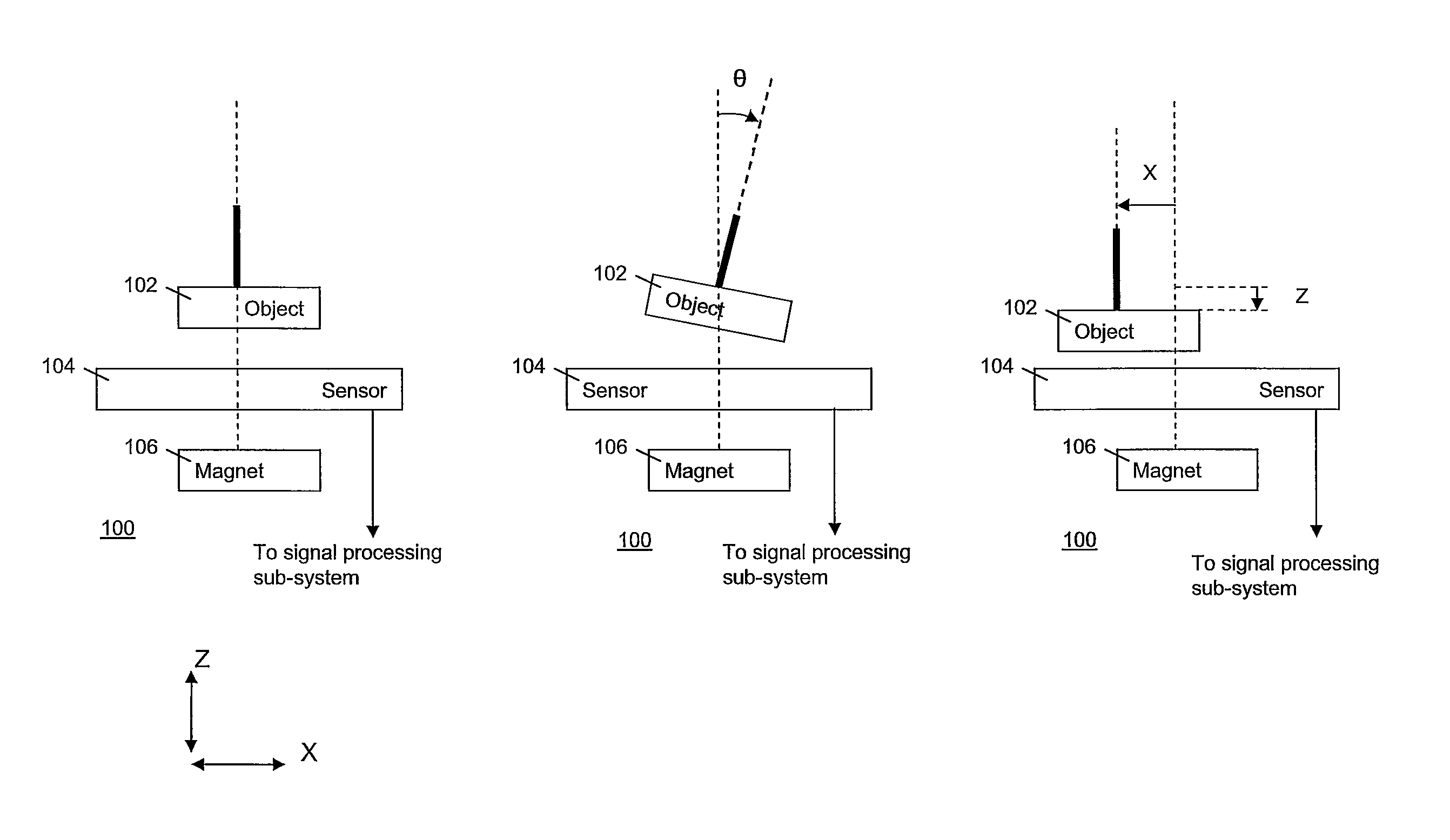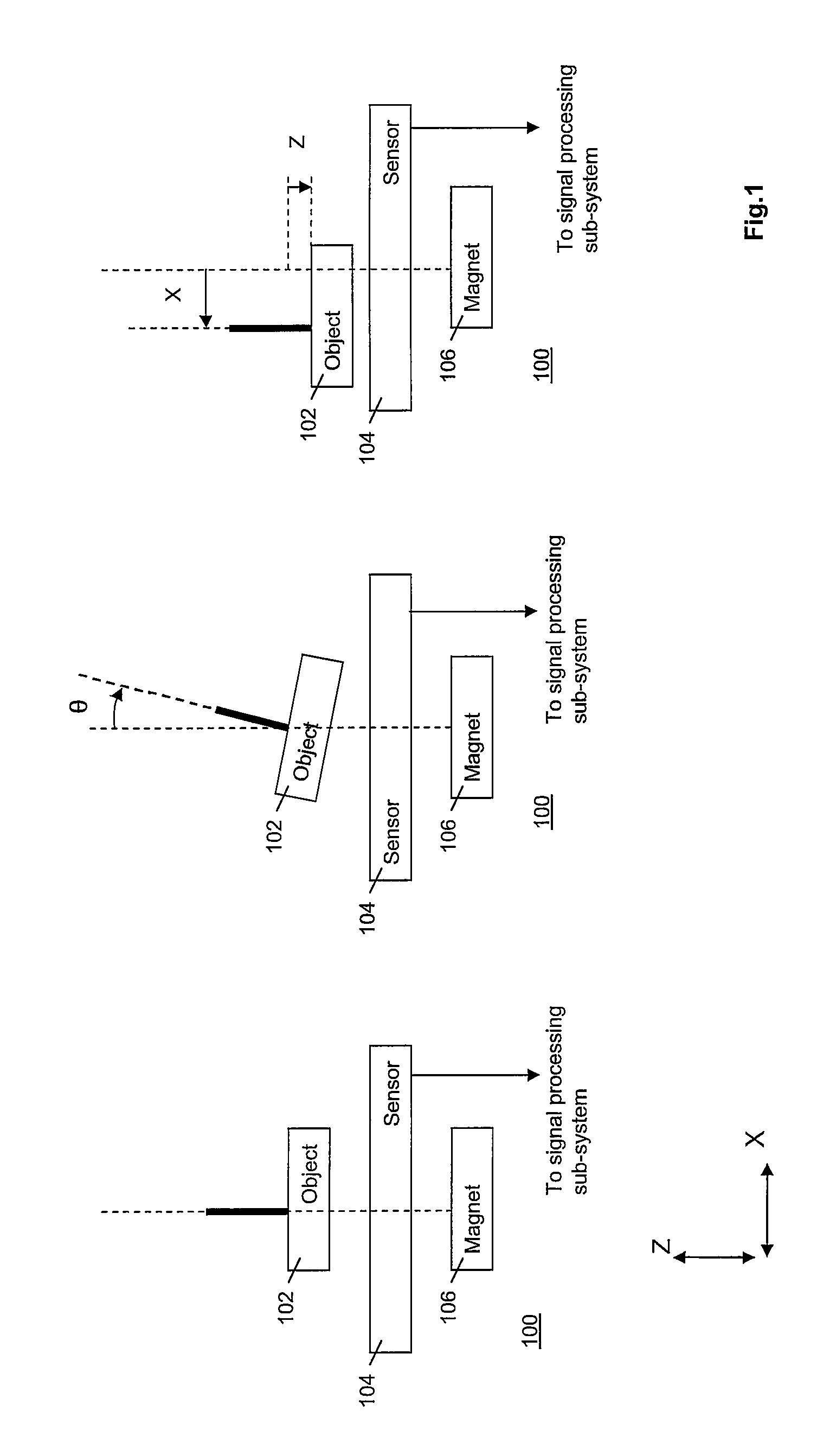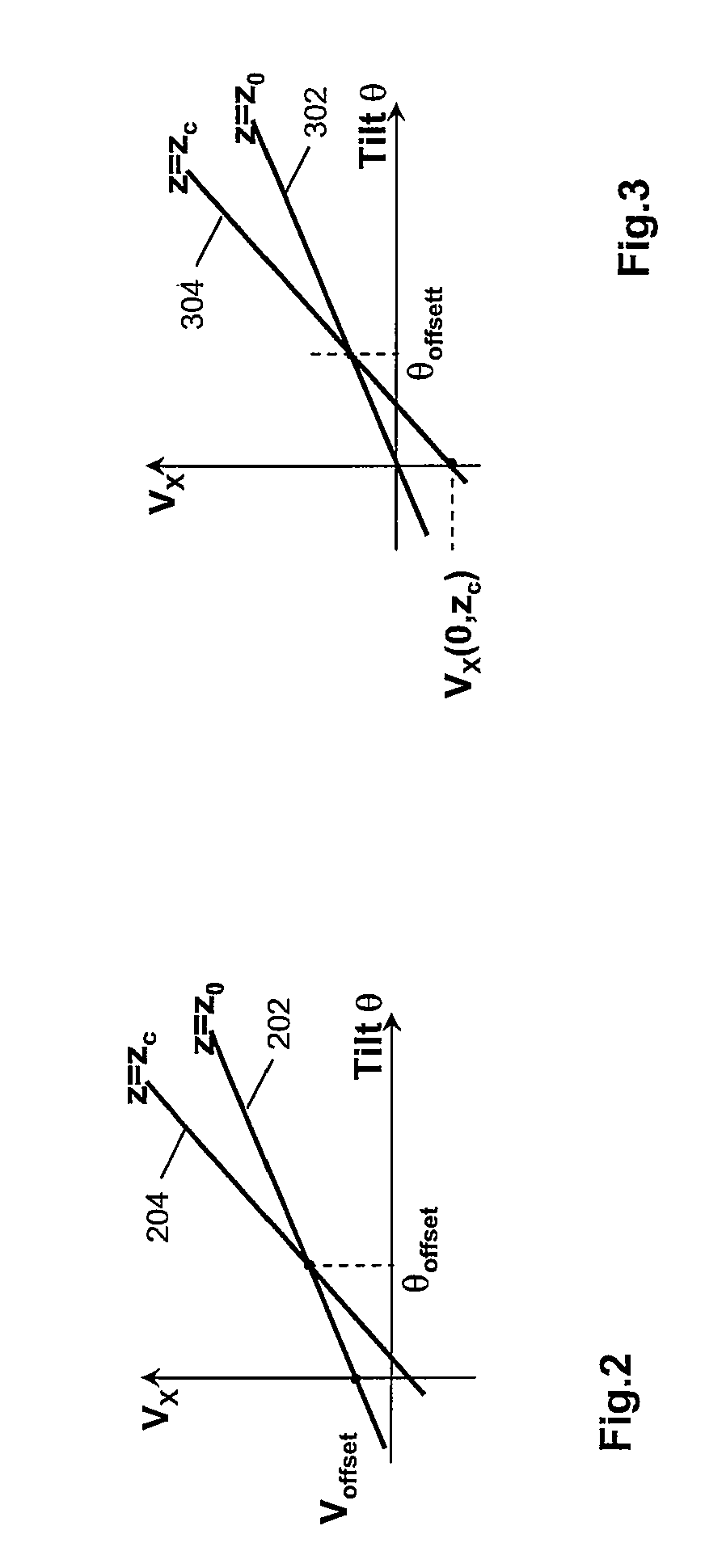Calibration of an AMR sensor
a technology of amr sensor and amr sensor, which is applied in the direction of mechanical control devices, instruments, manual control with single controlling member, etc., can solve the problems of unsatisfactory joysticks, unsatisfactory joysticks, and inability to make ideal joysticks, etc., to achieve more control, shorten the distance, and increase the sensitivity
- Summary
- Abstract
- Description
- Claims
- Application Information
AI Technical Summary
Benefits of technology
Problems solved by technology
Method used
Image
Examples
Embodiment Construction
[0024]In an example embodiment, a joystick module has a joystick and a sensor for generating a signal in response to sensing a magnetic field representative of a position and / or orientation of the joystick. Using a linear dependence of the sensor's sensitivity on a distance between the joystick and the sensor, the sensor's signal representative of a tilt angle of the joystick can be calibrated in a simple manner.
[0025]FIG. 1 are block diagrams of a sensor system 100 comprising an object 102, e.g., a joystick, that can move relative to a sensor 104 in at least the X-Z plane as indicated, and a field generator 206 for generating a field, e.g., a magnetic field. Different positions and / or orientations of object 102 relative to generator 106 give rise to differences in the fields that are sensed by sensor 104. Sensor 104 is connected, e.g., by a galvanic, optic or wireless connection to a signal processing sub-system (not shown) that processes the sensor output signal. The signal can be...
PUM
 Login to View More
Login to View More Abstract
Description
Claims
Application Information
 Login to View More
Login to View More - R&D
- Intellectual Property
- Life Sciences
- Materials
- Tech Scout
- Unparalleled Data Quality
- Higher Quality Content
- 60% Fewer Hallucinations
Browse by: Latest US Patents, China's latest patents, Technical Efficacy Thesaurus, Application Domain, Technology Topic, Popular Technical Reports.
© 2025 PatSnap. All rights reserved.Legal|Privacy policy|Modern Slavery Act Transparency Statement|Sitemap|About US| Contact US: help@patsnap.com



